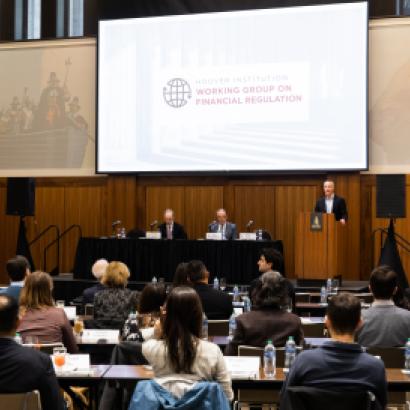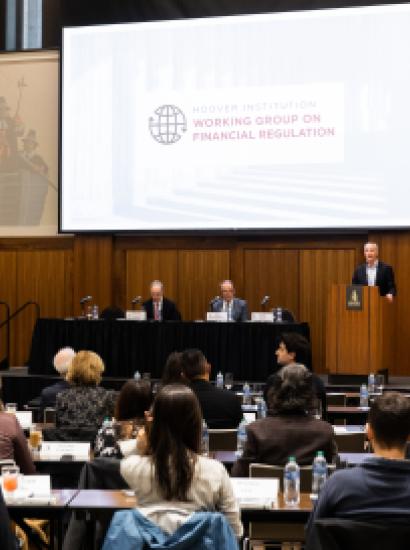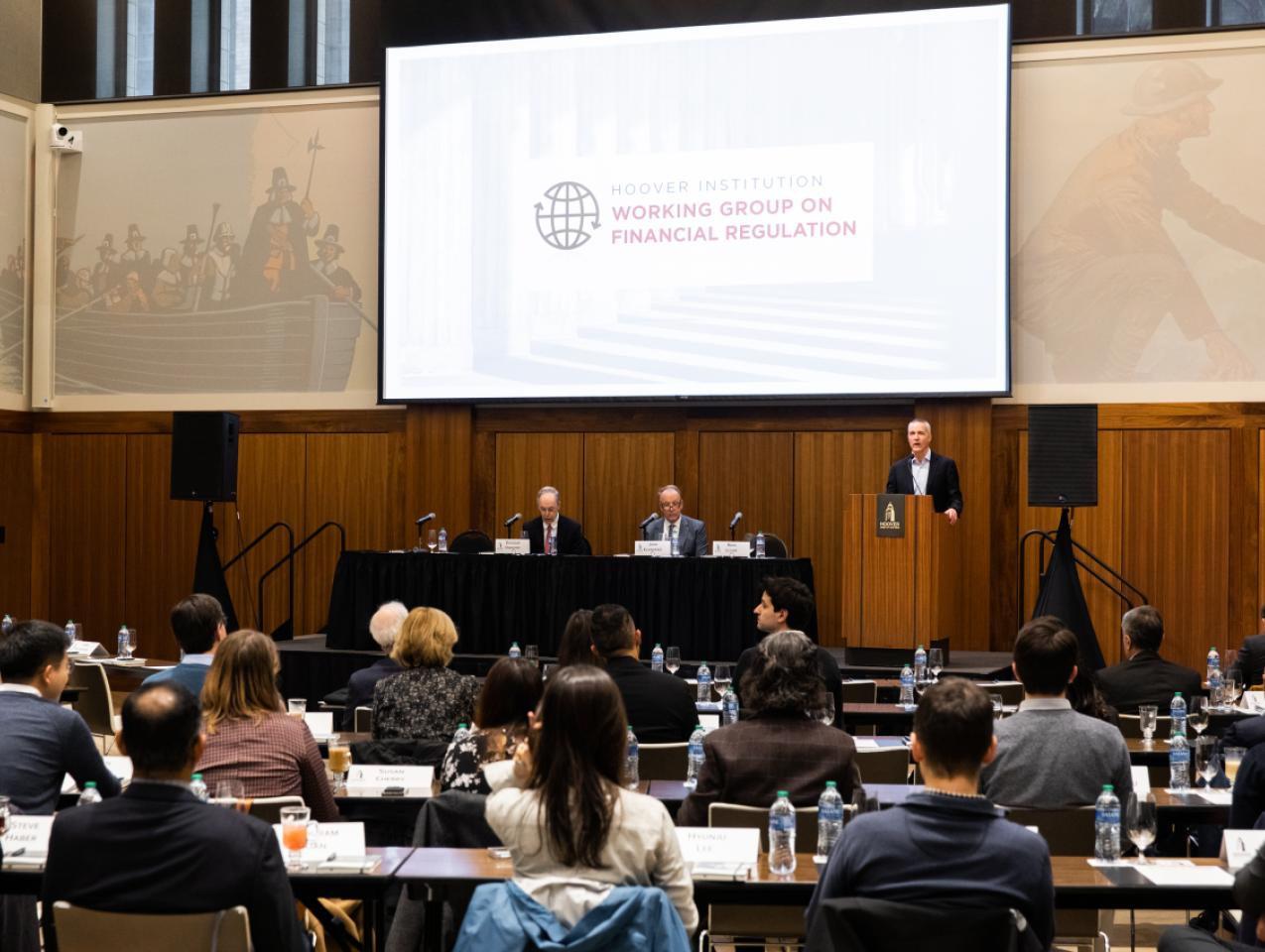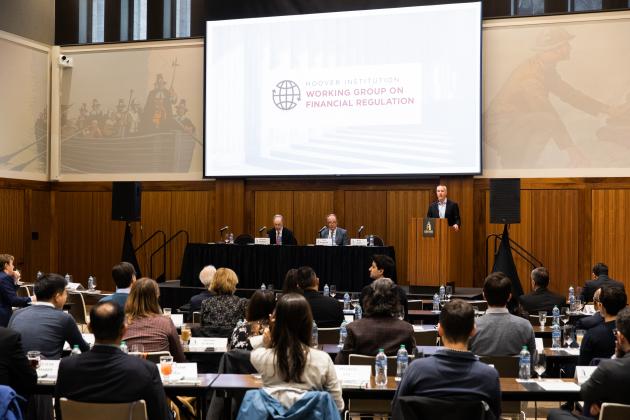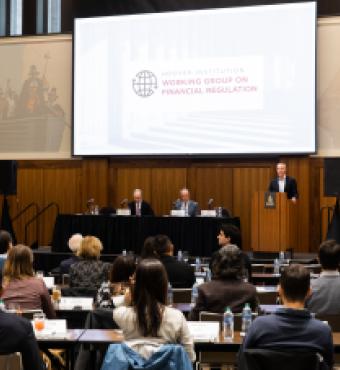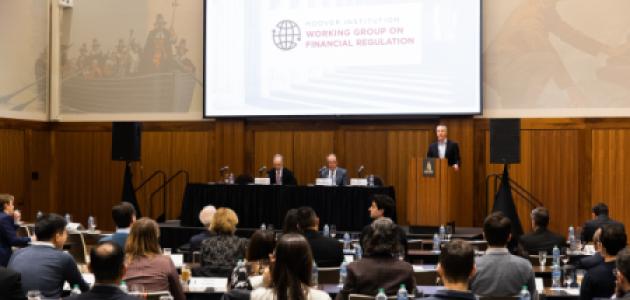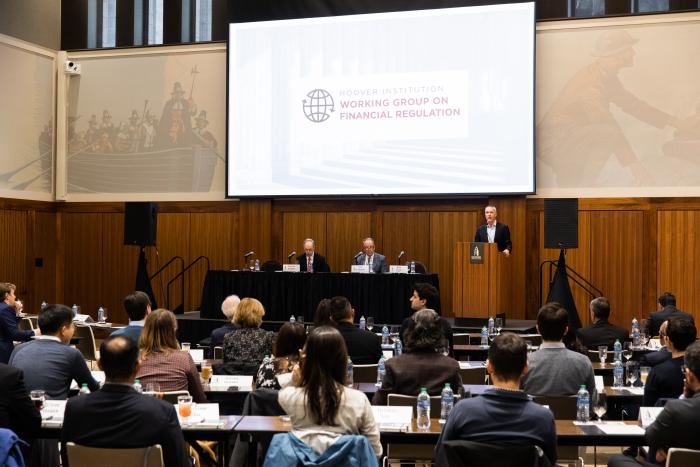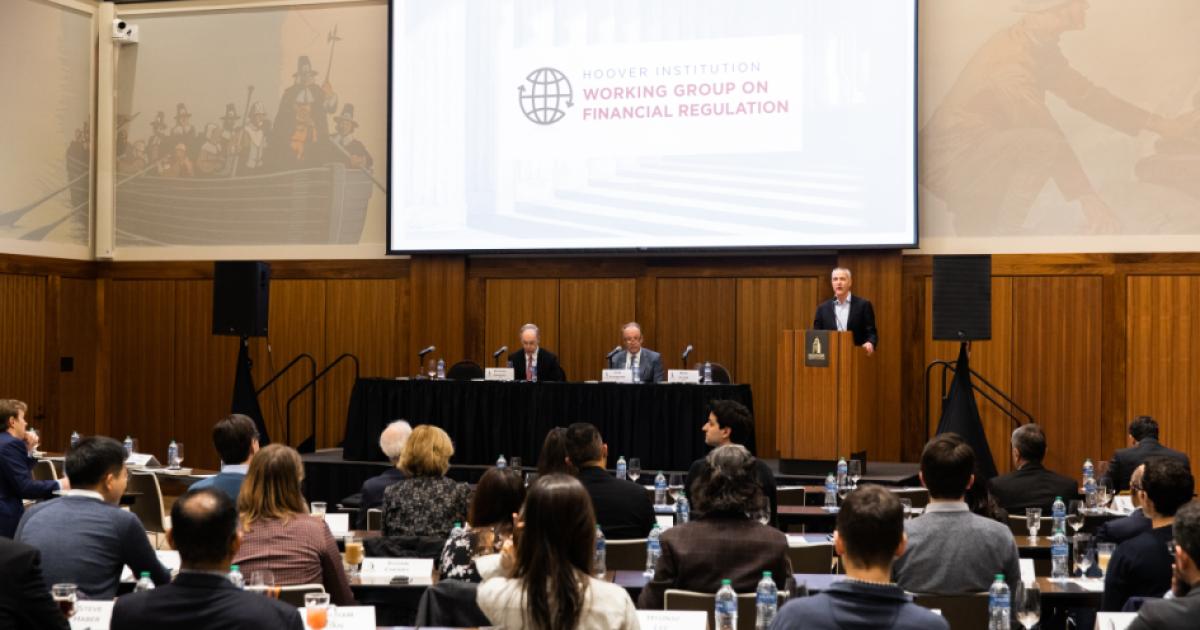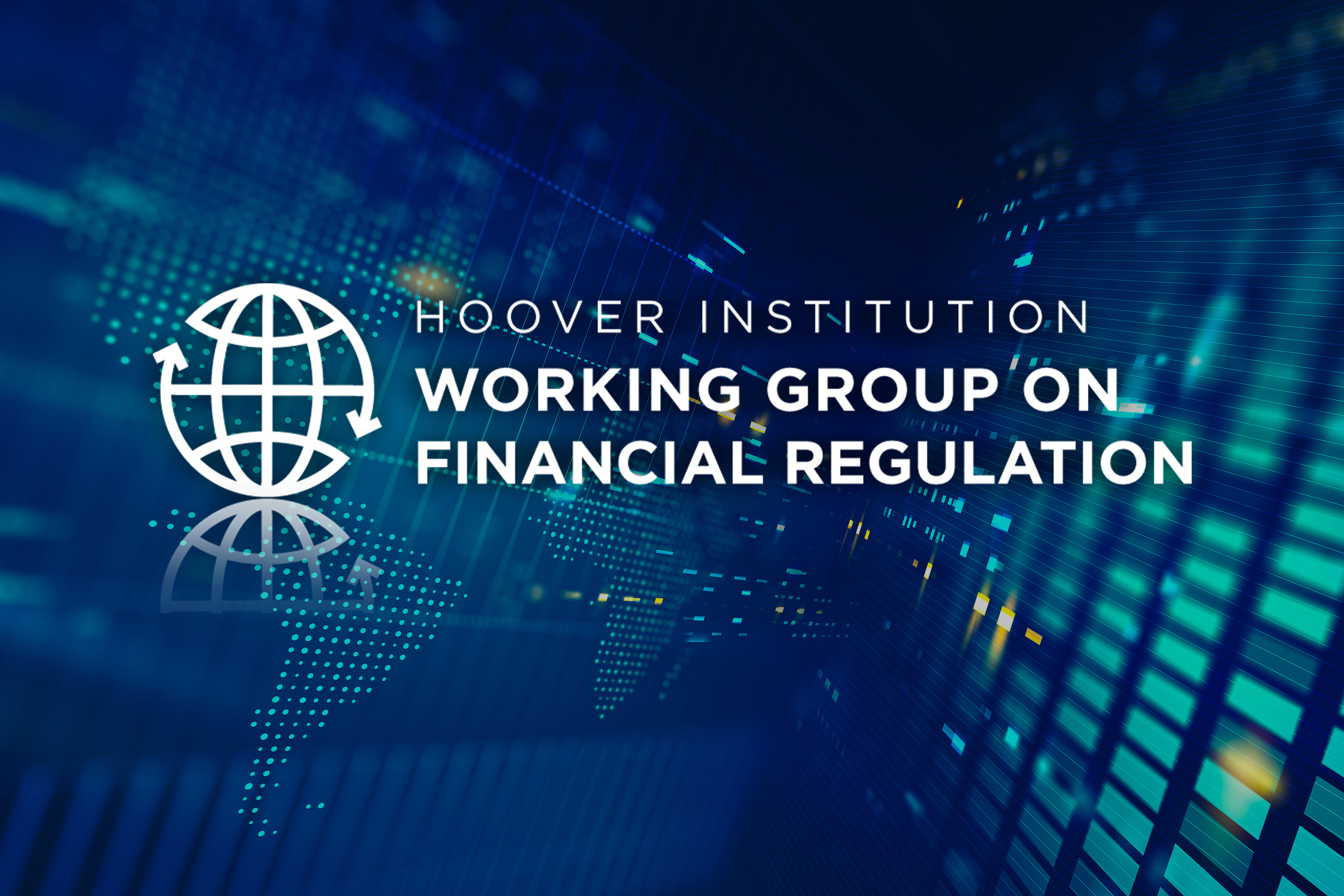Which financial regulations promote economic prosperity? And why do societies find it so difficult to create financial systems that are both efficient and stable? Given the tumultuous financial events of recent decades and the financial system’s central role in promoting economic growth, facilitating technological innovation, and alleviating poverty, the Hoover Institution has launched the Working Group on Financial Regulation. This new initiative is the first of its kind at Hoover to address these questions and deliver valuable insights regarding existing and proposed regulations to policymakers and the broader public.
“Our goal is to create a multidisciplinary network of researchers, policymakers, and practitioners that regularly meets to dissect and debate the efficacy of financial policies and offer practical information to policymakers and the public,” says Ross Levine, codirector of the working group.
The Working Group on Financial Regulation held its inaugural conference at Stanford University on February 15–16, 2024. Esteemed scholars and policymakers from the US Federal Reserve system and the European Central Bank engaged in robust, in-depth discussions about the effects of bank regulations on financial systems and the economy.
Following his attendance at the conference, the director-general of research at the European Central Bank, Luc Laeven, noted that “Hoover's Financial Regulation Working Group fills a vital public need by creating a venue for and network of international scholars and regulators to address candidly and rigorously the major financial policy challenges of our time.”
Economist and Nobel laureate Doug Diamond set the tone with a keynote address that spurred a candid discourse on the repercussions of recent US interest rate hikes on bank stability and the broader economy. His insights on practical regulatory and supervisory reforms underscored the urgency of rethinking regulatory frameworks.
The conference papers, while diverse, collectively underscore critical concerns regarding the current bank regulatory landscape.
Highlighting the interconnectivity of regulations, Dean Corbae of the University of Wisconsin–Madison and Ross Levine of the Hoover Institution warn against the frequent practice of analyzing each regulation in isolation, showing how the impact of capital regulations on bank efficiency and stability depends significantly on regulations shaping bank governance and competition.
Roberta Romano of Yale University traces the evolution of US bank regulations for over a century. Professor Romano shows that following banking crises, Congress generally reacts quickly to enact new bank regulations layered on top of old rules, creating an increasingly complex and opaque regulatory regime.
Also focusing on crises, Cornell University’s Matthew Baron and coauthors show that larger banks take more significant risks before crises and suffer greater losses following crises. Yet, consistent with too-big-to-fail regulations, those large banks typically enjoy greater survival rates and increase their market shares following crises.
Examining recent trends in banking, Naz Koont of Columbia University provides novel evidence on an enduring theme in banking research: the potential trade-off between efficiency and stability. She shows that digital platforms stimulate competition and efficiency but spur riskier lending.
The conference’s final paper, by Amit Seru of the Hoover Institution and coauthors, presents startling evidence of how the US banking industry has changed over the last half-century. While 70 percent of banks’ assets were loans in the 1970s, that rate has fallen to about 55 percent today, as arms-length transactions such as securitization play increasingly significant roles in intermediating credit. Technological innovations have facilitated this transformation, raising questions about banking-sector policies designed for a different financial system.
The event culminated in a forward-looking panel debate that grappled with urgent public policy questions, including how to design effective liquidity requirements, the impact of financial rescues on monetary and fiscal policies, and the dangers of regulatory capture for financial stability and efficiency. The agenda and papers are available here.
Codirectors Stephen Haber and Ross Levine articulate a clear vision for the Working Group on Financial Regulation: to probe the most pressing financial regulatory issues and disseminate insights that resonate with researchers, decision makers, and the public. Besides hosting its annual conference, the working group will host visitors, organize small symposia, and publish research briefings that communicate the policy implications of research to nonspecialists.








